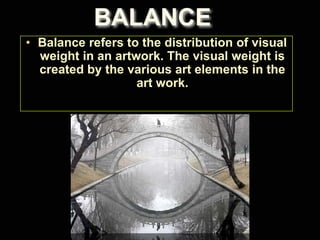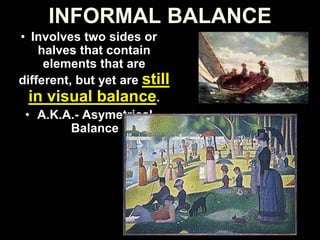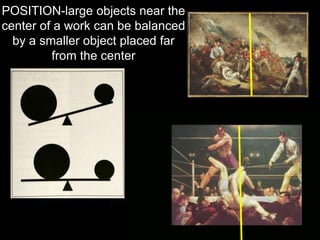Balance
- 5. BALANCE âĒ Balance refers to the distribution of visual weight in an artwork. The visual weight is created by the various art elements in the art work.
- 6. FORMAL BALANCE âĒ When elements on both sides of a central vertical or horizontal line appear to be equal or close to equal. âĒ A.K.A.-Symmetrical or Classical Balance
- 8. Symmetry âĒ When both sides of a balanced composition are identical (mirror images of each other).
- 9. RADIAL BALANCE âĒ When all the elements radiate out from a central point.
- 10. INFORMAL BALANCE âĒ Involves two sides or halves that contain elements that are different, but yet are still in visual balance. âĒ A.K.A.- Asymetrical Balance
- 11. WEIGHT OF THE ELEMENTS element heavier lighter contour/shape larger, complex, interesting smaller, simple
- 12. WEIGHT OF THE ELEMENTS element heavier lighter Color Bright/Warm Dull/Cool
- 14. WEIGHT OF THE ELEMENTS element heavier lighter Value Most Contrast Least Contrast
- 15. element heavier lighter Line heavy, dark and complicated light and simple texture rough smooth WEIGHT OF THE ELEMENTS
- 16. POSITION-large objects near the center of a work can be balanced by a smaller object placed far from the center


















